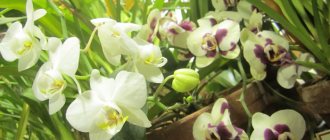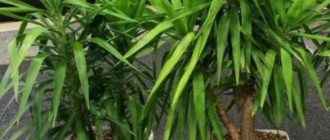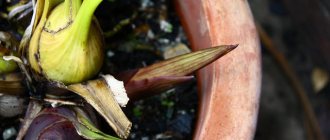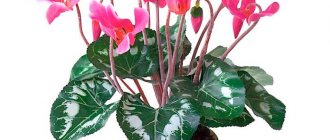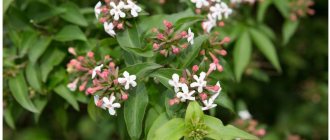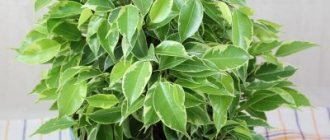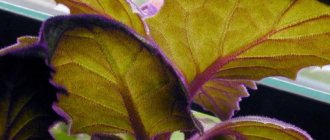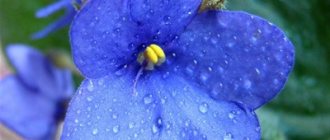Methods, their pros and cons
| Way | Advantages | Flaws |
| A baby growing naturally on a hyacinth bulb | The easiest and fastest way to obtain new plants, which does not require any special action from the gardener. The baby is separated during standard digging of hyacinth for drying. | Hyacinth annually grows no more than 7 baby bulbs, some varieties produce only one or not at all. |
| Seeds | You can get many plants of different colors. Cheap and easy way. Can be used in the off-season. | Long wait for flowering (up to 8 years). The characteristics of the mother plant are not inherited 100%. |
| By cutting (notching) the bottom and propagation by scales | The number of children obtained from 1 onion increases to several dozen. | There is a risk of damaging the mother's bulb and not getting any offspring at all. To educate a child, special conditions must be created. |
| Leaves and peduncle | The plant bulb is not damaged. Suitable for propagation of rare and expensive varieties. | A painstaking and lengthy method that requires the creation of special growing conditions. Flowering will have to wait several years. |
Description of hyacinth
The plant gained great popularity thanks to the Netherlands, which received the name “hyacinth center” . It was in this country that breeders developed a large number of varieties and hybrid forms of the flower, the bulbs of which are annually exported to other countries.
The plant's bulbs have a dense structure, represented by succulent lower leaves. The stems flowering from the bottom grow up to 30 cm. In the lower region of the shoots there are narrow, upward-pointing leaves. is formed in the corner of the upper plate , from which a bulb is then transformed. This bulb will bloom the next year. It is possible that small bulbs may also form on other leaves, which are cut off and used for subsequent vegetative propagation of the plant.
The raceme inflorescences, located at the top, consist of flowers collected in a cone-shaped or cylindrical shape. The perianths are bright , bell-shaped funnels with bent blades.
Hyacinths are characterized by a wide palette . Flowers can be white, yellow, orange, pink, purple, red, blue. They come in simple and terry shapes. Three-lobed fruits have two seeds with delicate skin in each nest.
How to grow from seeds, photo of sprouts
Hyacinth seeds are formed in fruits - boxes that appear on the peduncle after flowering.
They are not very small, round, flat, black. Fresh seeds have the best germination rate , so it is better not to buy them in the store, but to collect them from your own plants.
To do this, fading flower clusters are not cut off, but left on the plant. When the boxes acquire a dark shade (from light brown to dark beige) and dry, they are collected and the seeds are extracted.
Attention ! When propagated by seed, the hyacinth offspring do not completely replicate the plant from which the seed was taken. Seedlings will delight you with a variety of shades of buds.
Sowing begins in early September if the seeds are placed in open ground (practice in the southern regions). At home, sowing can be done all year round.
Step-by-step instructions for growing perennials from seeds.
- To sow hyacinth, prepare low and wide bowls with drainage holes. The substrate is made up of equal parts of sand, non-acidic peat and garden soil. To prevent diseases, the soil is watered with a hot solution of potassium permanganate or steamed in a water bath.
You can use ready-made universal primer with neutral acidity.The garden bed is carefully dug up, removing weed roots, enriched with humus and added up to a bucket of sand per 1 square meter. m.
- It is recommended to pickle seeds, especially those collected from your own plants, in a pink solution of potassium permanganate or any suitable fungicide.
- Sowing is carried out to a depth of 10-13 mm, at a distance of 15-25 mm from each other.
- Before the onset of cold weather, crops in open ground are mulched with sawdust and fallen leaves. In spring, the shelter is removed and seedlings awaited.
Bowls with hyacinth are put away in the cellar for the winter or kept for 2 months in the refrigerator at a temperature of +8 degrees. After cold exposure, the boxes are transferred to a warm and bright room , and they begin to regularly moisten the soil.
Hyacinth germinates from seeds for about a month at a temperature of +17 +19 degrees and moderate humidity. Seedlings are cared for in the standard way: watered, weeded, loosened. The plants are not dug up for the first 2 years. Starting from the third season, the bulbs are dug up at the end of July, dried and replanted in September.
On a note . Hyacinth obtained from seeds will delight you with flowering in the 5-7th year of life.
This is what hyacinth sprouts look like:
Hyacinth in the garden from a bulb
In order to grow hyacinth in the garden from a bulb, you must follow the following recommendations:
- You need to choose medium-sized bulbs; it is better to save the largest ones directly for forcing. The bulb must be dense, without any visible damage or pest-infested areas. If the onion is soft, then it’s better to throw it away immediately and don’t waste time, it won’t sprout anyway.
- Choose a suitable time for planting, usually during Indian summer (late September or early October).
- Place. To plant bulbs in the garden, you need to choose a well-lit, open area where there are no strong winds. The selected area should be located away from trees or shrubs, otherwise their roots will take all the moisture. It is best to choose a plot of land that is flat or has a slight slope so that water drains and does not linger in any niches.
- The soil. The soil must be dug up in advance and fertilized. Mineral fertilizers or humus are suitable for this purpose, but under no circumstances use fresh manure. A flower will not be able to bloom in soil with acidic and dense soil in which water stagnates. Therefore, if you have any of the problems listed above, it needs to be fixed. For example, lay drainage or add sand, you can also use lime.
Leaves
The hyacinth leaf is able to grow a baby suitable for development at the place where it is cut from the plant. This propagation option allows you to get offspring from hyacinth during the flowering period without disturbing the bulb. It is often used during the forcing period to preserve the variety you like.
Step-by-step instruction.
- During the period of hyacinth budding, 1-2 leaves (no more!) are cut from the plant with a sharp sterile knife. The leaf should be cut as close to the stem as possible. For planting, only the fleshy lower third of the leaf is used, the top is thrown away. The sections are sprinkled with charcoal powder.
- To stimulate the formation of children, leave the leaves in a solution of heteroauxin or root for 20 minutes.
- Plant the leaf in a mixture of perlite (coarse sand) and peat, or in one moistened perlite. Planting depth 2 cm, distance between leaves 3-4 cm.
- The plantings are covered with a film cap or a cut plastic bottle to maintain high humidity. Place it on the brightest windowsill and maintain the temperature no higher than +20 degrees.
Each leaf cutting produces 2-4 babies within 2 months , after which the greenhouse is removed from the crops. The bulbs gain weight very slowly and the hyacinths are not disturbed for 2 years, kept at home. They can only be planted for the third season.
How to propagate and grow hyacinths at home?
Hyacinth belongs to the lily family.
There are more than 30 species of different subspecies.
The flowers of the plant can be double, fragrant and simple.
Suitable for growing at home, garden plots, greenhouses and botanical gardens. Asia is considered the birthplace of the flower.
How do they reproduce from bulbs?
The most common method among amateur gardeners, allowing you to quickly and easily obtain planting material. The hyacinth offspring obtained in this way completely copies the appearance of the mother plant.
Children
An adult hyacinth bulb annually grows from 1 to 3 children. Small onions are formed near the bottom from the root primordia .
They are carefully separated from the plant during the period of digging up the hyacinth for drying and planted in the fall in a separate bed for growing.
The peduncle is formed on bulbs exceeding a diameter of 2.5 cm.
By cutting out the bottom
You can increase the number of babies growing on one bulb artificially . The process is simple.
- Mature healthy bulbs, dug up in the summer for drying, are treated for diseases, washed and dried.
- Using a sharp thin knife or sharpened spoon, make a cone-shaped cut on the bottom of each onion, removing the entire center. The cut is dusted with ash or wiped with a pink solution of potassium permanganate.
- The onion is placed cut side up on a sand cushion in any suitable container. Cover with a piece of film to maintain high humidity.
- Plantings are regularly moistened, kept in light, at a temperature of +28 +30 degrees.
- A tiny baby forms along the edge of the cutout after 50-80 days. They are in no hurry to separate her. The bulb, along with its offspring, is planted in a pot with fertile soil (humus + sand + garden soil), cut side up, and grown until the baby increases in size to 2-3 cm.
On a note . The bottom of the onion does not need to be cut out, but only cut crosswise. The depth of the cut is up to a third of the height of the onion.
The process of propagating hyacinths by cutting out the bottom is shown in the video:
What do hyacinth seeds look like?
Hyacinth seeds are quite small, up to 2-3 mm in diameter. Their shape is close to spherical, the surface seems to be “wrinkled” or “hairy”. White “tails” stand out against a general black (less often dark gray) background.
Trending Wisteria for the middle zone: dreams come true!
To avoid “counterfeiting,” hyacinth seeds should be collected yourself or purchased from trustworthy sellers
Non-standard methods
There are flower growers and collectors who like to use unusual propagation methods on their plants. Sometimes this is the only way to obtain a sufficient number of offspring from a rare and expensive variety.
Children made of scales
A large healthy onion is suitable for this method .
It is cut into 4 equal parts with a very sharp and clean knife. Then, from each part, starting from the bottom, individual scales are broken off. Each bulb can produce several dozen scales. Pour a handful of raw sand or perlite into a thick plastic bag and place the scales there. The bag is inflated and tied, placed in a warm and bright place.
New small bulbs on the cut of the scales are formed within 1.5-2 months . During this time, the bag should be regularly opened for ventilation and, if necessary, sprinkled with perlite with water.
They are in no hurry to tear the baby away from its scales. Wait for the roots to form and plant it together with scales in a loose fertile substrate.
From leaf cuttings
A leaf taken from a hyacinth during budding can be planted not entirely, but cut into pieces, increasing the number of potential babies. To do this, the lower half of the leaf plate is cut crosswise into pieces 5 cm wide. They are rooted in the ground in the same way as a whole leaf.
From flower stalks
When the plant throws out a peduncle and the first buds open on it, the stem can be used to produce a baby.
It is carefully cut (as low as possible), the flower cluster is removed and the lower cut is treated with a root formation stimulator, and the upper cut is sprinkled with crushed coal.
The peduncle, like leaf cuttings, is planted in damp sand or perlite , placing the pot in a greenhouse. Hyacinth is kept in bright, diffused light and a temperature of +15 +18 degrees. The baby at the base of the peduncle will begin to form in 30-50 days.
Caring for young plants immediately after the procedure
Seedlings obtained from seeds or bulbous scales are kept in bright and diffused lighting (eastern window, phyto lamps). Growing temperature +16 +20 degrees. In summer, boxes with hyacinths can be taken outside.
In the southern regions, hyacinth is grown from seeds directly in the garden bed, covered with sawdust or fallen leaves for the winter. In regions with harsh winters, young plants are stored in a cellar , greenhouses or refrigerator.
Small bulbs, after being separated from the mother tuber or removed from the substrate, are kept in a fungicide solution (Maxim, Fitosporin, Fundazol, potassium permanganate) to prevent rot and dried. They can be planted in soil for flowering after the diameter exceeds 2.5 cm. Planting takes place in the fall, as is standard for bulbous plants.
Reproduction
Let's look at how to propagate hyacinths at home. There are four methods of reproduction.
Propagation of hyacinths at home using seeds should only be used for breeding new subspecies.
When planted with seeds, the plant will bloom only 6-9 years after planting.
How to grow hyacinth from seeds at home? It is best to start planting material in warm weather. It is necessary to select boxes that have not yet opened.
It is important that they are amber in color.
It is not recommended to use emerald ones, as they have not yet had time to ripen. A week after assembly, the boxes crack on their own.
The seeds are thoroughly dried and cleared of scales. It is best to use paper bags. Before sowing, they must be stored in a cool room.
It is necessary to prepare containers with the substrate. Make small grooves no more than 2 cm deep.
If you sow seeds deeper, they will not have time to sprout and will rot in the soil.
For 1 sq. about 200 seeds are sown per meter. Drainage and sand must be poured into the bottom of the container. This will prevent the root system from rotting. In six months you should expect the first shoots.
By the end of the growing season, a small onion should appear. It has a pear shape. During the entire growing period, the soil must be loosened, fertilized, ventilated, and systematically watered.
Bulbs
How to grow hyacinth from a bulb?
For each bulb, allocate one container with a diameter of 18-20 cm. Drainage is made into the container from clay petioles. Fine-grained sea sand is poured onto the bottom.
The soil should be fortified with plenty of nutrients.
The bulbs are planted in such a way that 1/3 remains on the soil surface. The depth of embedding should not exceed 4 cm. The soil must be loosened, fertilized and systematically watered.
Two years after planting, a full-fledged plant should grow. At the 3rd or 4th year of life, this representative of the flora begins to bloom. During all active growth, the flower requires a temperature of 17-21°C. The room should be bright and well ventilated.
Leaflets
In the budding phase, this representative of the flora can be propagated by leaves.
You can take 2 leaves from each flower. They are immediately dipped into the heteroauxin mixture. Half the tablet is diluted in 1 liter of water.
It is necessary to keep the leaves in the solution for 6-9 hours.
Then they are planted in containers with substrate. The soil is mixed with fine-grained sea sand and peat.
After 9-11 days, callus should appear on the wound surface. After a month, the first rudiments of the bulbs appear. After 60 days, the bulbs should have young new leaves and a root system. After this, the flower must be transplanted into nutritious fortified soil.
One leaf can produce from 7 to 10 babies.
Double scales
The bulbs are cleaned and dried. The onion must be cut off 1/3 of its height. After this, it is divided into 8 equal parts.
It is important that each part retains a small piece of the bottom.
One large bulb can produce up to one hundred paired scales. To disinfect wounds of planting material, it is necessary to use crushed charcoal.
Then the planting material is placed in plastic bags with perlite. Perlite is pre-moistened with 1 drop of foundationazole mixture. The packages are tied tightly.
After 30 days, callus should appear on the cutting line of the scales. It forms tubercles - new embryos of future bulbs. They must again be treated with foundationazole and placed in plastic bags.
3-4 months after division, the planting material should form a root system. Then each bulb is planted in a substrate of fine-grained sea sand. The containers are placed in a cold room.
The substrate must be kept moist at all times. Periodically it is necessary to wait for the top layer of soil to dry out. You can find out more about planting hyacinth indoors here, and we talked in more detail about planting hyacinths in open ground in this material.
What should you know to avoid mistakes?
When growing seedlings from seeds or children, you need to remember the need to maintain high (up to 90%) air humidity and the inadmissibility of waterlogging the soil.
The substrate for growing hyacinth must be loose. Hyacinth seedlings do not like high air temperatures, more than +25 degrees. At home, it should not be kept near heating appliances.
There is no need to rush to separate the tiny bulbs from the mother plant . Without developed roots, they can die even in the richest substrate. The ability to live independently appears in a child when the diameter of the bulbs exceeds 1.5 cm.
To increase the germination of not fresh seeds, they are kept in Epin, Heteroauxin, according to the instructions.
Growing hyacinths in pots
How to grow hyacinths in pots?
The plant prefers bright, diffused light. Does not like cold winds and drafts.
The soil should be loose and breathable. Humus must be added to the substrate.
The containers must have a drainage system that will not allow excess moisture to accumulate. Expanded clay, pebbles, shards or broken bricks are suitable for this.
After flowering, the peduncle must be cut off. At the beginning of autumn, watering and fertilizing are reduced to a minimum.
At the beginning of winter, the plant enters a dormant period. At this time, the leaves shrink and die. All useful substances pass into the onion.
